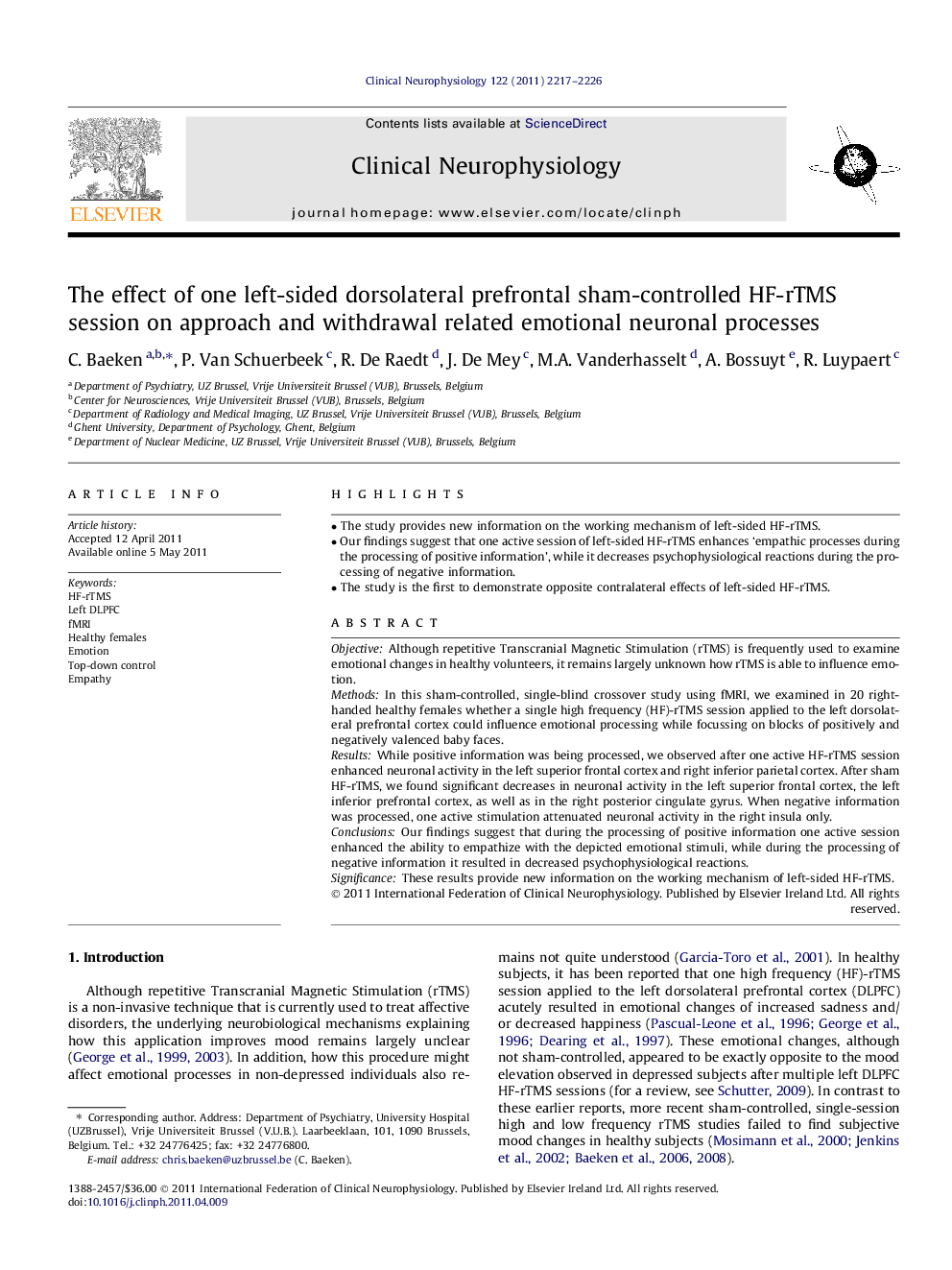| Article ID | Journal | Published Year | Pages | File Type |
|---|---|---|---|---|
| 3043800 | Clinical Neurophysiology | 2011 | 10 Pages |
ObjectiveAlthough repetitive Transcranial Magnetic Stimulation (rTMS) is frequently used to examine emotional changes in healthy volunteers, it remains largely unknown how rTMS is able to influence emotion.MethodsIn this sham-controlled, single-blind crossover study using fMRI, we examined in 20 right-handed healthy females whether a single high frequency (HF)-rTMS session applied to the left dorsolateral prefrontal cortex could influence emotional processing while focussing on blocks of positively and negatively valenced baby faces.ResultsWhile positive information was being processed, we observed after one active HF-rTMS session enhanced neuronal activity in the left superior frontal cortex and right inferior parietal cortex. After sham HF-rTMS, we found significant decreases in neuronal activity in the left superior frontal cortex, the left inferior prefrontal cortex, as well as in the right posterior cingulate gyrus. When negative information was processed, one active stimulation attenuated neuronal activity in the right insula only.ConclusionsOur findings suggest that during the processing of positive information one active session enhanced the ability to empathize with the depicted emotional stimuli, while during the processing of negative information it resulted in decreased psychophysiological reactions.SignificanceThese results provide new information on the working mechanism of left-sided HF-rTMS.
► The study provides new information on the working mechanism of left-sided HF-rTMS. ► Our findings suggest that one active session of left-sided HF-rTMS enhances ‘empathic processes during the processing of positive information’, while it decreases psychophysiological reactions during the processing of negative information. ► The study is the first to demonstrate opposite contralateral effects of left-sided HF-rTMS.
